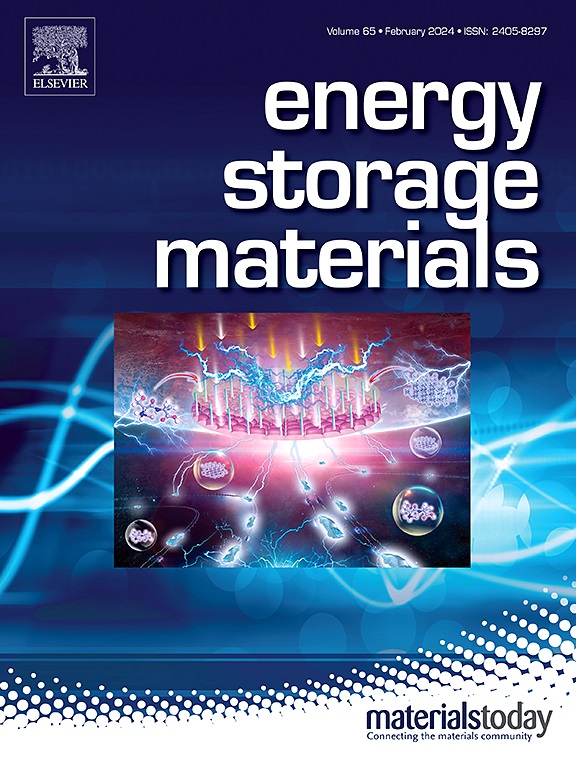Cascade effect of bioinspired slow-release protective layer enables stable Zn metal batteries
IF 18.9
1区 材料科学
Q1 CHEMISTRY, PHYSICAL
引用次数: 0
Abstract
Aqueous Zn metal batteries have shown promise for large-scale energy storage systems, yet are constrained by cathodic metal ion dissolution and anodic dendrite growth. Herein, inspired by controlled drug delivery systems, we pioneer a bioinspired slow-release protective layer (SPL) on the Zn anode surface. The results indicate that SPL exhibits a unique cascade effect, which not only guides spherical Zn deposition through the solid-liquid biphasic structure and sustained K+, but also innovatively extends protection to NH4V4O10 (NVO) model cathode via Cl−/I−/DMSO co-release. For the cathode, these released species in situ generate a ZnS/ZnF2-rich cathode electrolyte interphase (CEI) by reconstructing the Zn2+ solvation structure, effectively suppressing vanadium dissolution on the cathode side. Consequently, the capacity retention of the NVO||Zn pouch cell increases from 2.7 % to 65.3 % after 300 cycles and exhibits a low gassing behavior. This work provides a novel insight for the protective layer design and cathode protection.

生物激发缓释保护层的级联效应使锌金属电池稳定
水锌金属电池已经显示出大规模储能系统的前景,但受到阴极金属离子溶解和阳极枝晶生长的限制。在此,受受控药物输送系统的启发,我们在锌阳极表面开创了一种生物启发的缓释保护层(SPL)。结果表明,SPL表现出独特的级联效应,不仅通过固液两相结构引导球形Zn沉积并持续K+,而且还创新性地通过Cl−/I−/DMSO共释放扩展了对NH4V4O10 (NVO)模型阴极的保护。对于阴极,这些原位释放的物质通过重构Zn2+的溶剂化结构,生成了富ZnS/ znf2的阴极电解质界面(CEI),有效抑制了钒在阴极侧的溶解。因此,经过300次循环后,NVO||锌袋电池的容量保持率从2.7%提高到65.3%,并表现出低气化行为。这项工作为保护层设计和阴极保护提供了新的见解。
本文章由计算机程序翻译,如有差异,请以英文原文为准。
求助全文
约1分钟内获得全文
求助全文
来源期刊

Energy Storage Materials
Materials Science-General Materials Science
CiteScore
33.00
自引率
5.90%
发文量
652
审稿时长
27 days
期刊介绍:
Energy Storage Materials is a global interdisciplinary journal dedicated to sharing scientific and technological advancements in materials and devices for advanced energy storage and related energy conversion, such as in metal-O2 batteries. The journal features comprehensive research articles, including full papers and short communications, as well as authoritative feature articles and reviews by leading experts in the field.
Energy Storage Materials covers a wide range of topics, including the synthesis, fabrication, structure, properties, performance, and technological applications of energy storage materials. Additionally, the journal explores strategies, policies, and developments in the field of energy storage materials and devices for sustainable energy.
Published papers are selected based on their scientific and technological significance, their ability to provide valuable new knowledge, and their relevance to the international research community.
 求助内容:
求助内容: 应助结果提醒方式:
应助结果提醒方式:


